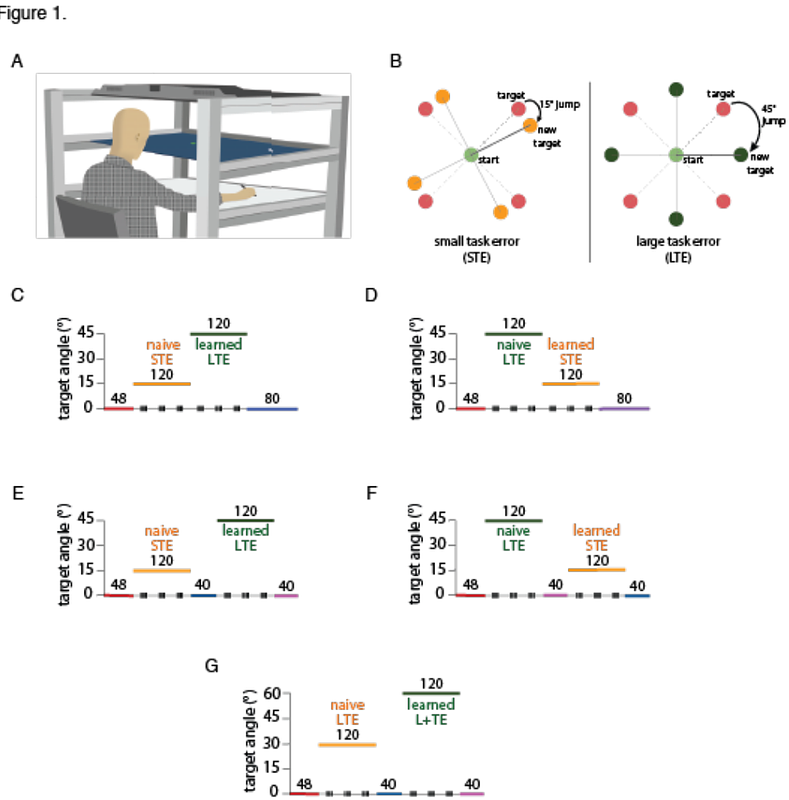Interaction between Model-based and Model-free Mechanisms in Motor Learning

Interaction between Model-based and Model-free Mechanisms in Motor Learning
Kumar, A. D.; Kumar, A.; Kumar, N.
AbstractMotor learning can be driven by distinct mechanisms - habitual, model-free processes, and strategic, model-based processes-depending on the magnitude and context of movement errors. Although small and large errors are known to engage distinct motor learning mechanisms - model-free (implicit) or model-based (explicit), respectively - it remains unclear whether successfully deploying one mechanism might hamper the engagement of the other in subsequent learning tasks. Here, we investigated how prior engagement of a particular mechanism biases future adaptations, even when the new task context typically favours the alternative strategy. Across three experiments (N=82), participants performed reaching movements to targets that either remained fixed or jumped mid-movement by small (15{degrees}) or large (30{degrees}, 45{degrees}, or 60{degrees}) angles. When first exposed to small errors (15{degrees}), participants exhibited persistent aftereffects in subsequent catch trials and stable reaction times (RTs), hallmarks of a model-free, habitual process. Surprisingly, even when switching to larger error magnitudes later, these participants continued to show robust aftereffects and did not elevate RTs - indicating a carryover of model-free learning. Conversely, participants who initially experienced large errors showed minimal aftereffects and flexible RT modulation consistent with model-based strategies; this bias persisted in later sessions with smaller errors, leading to reduced habitual aftereffects. Notably, inserting a washout phase to reset baseline performance did not abolish these mechanistic biases, highlighting that the initial engagement of either model-free or model-based processes leaves a durable imprint on subsequent adaptations. Taken together, these findings demonstrate that motor learning is shaped not only by ongoing task demands (e.g., error magnitude) but also by an individual's prior learning history. Understanding how initial learning experiences constrain future adaptations has broad implications for designing interventions and training protocols in motor rehabilitation and skill acquisition.